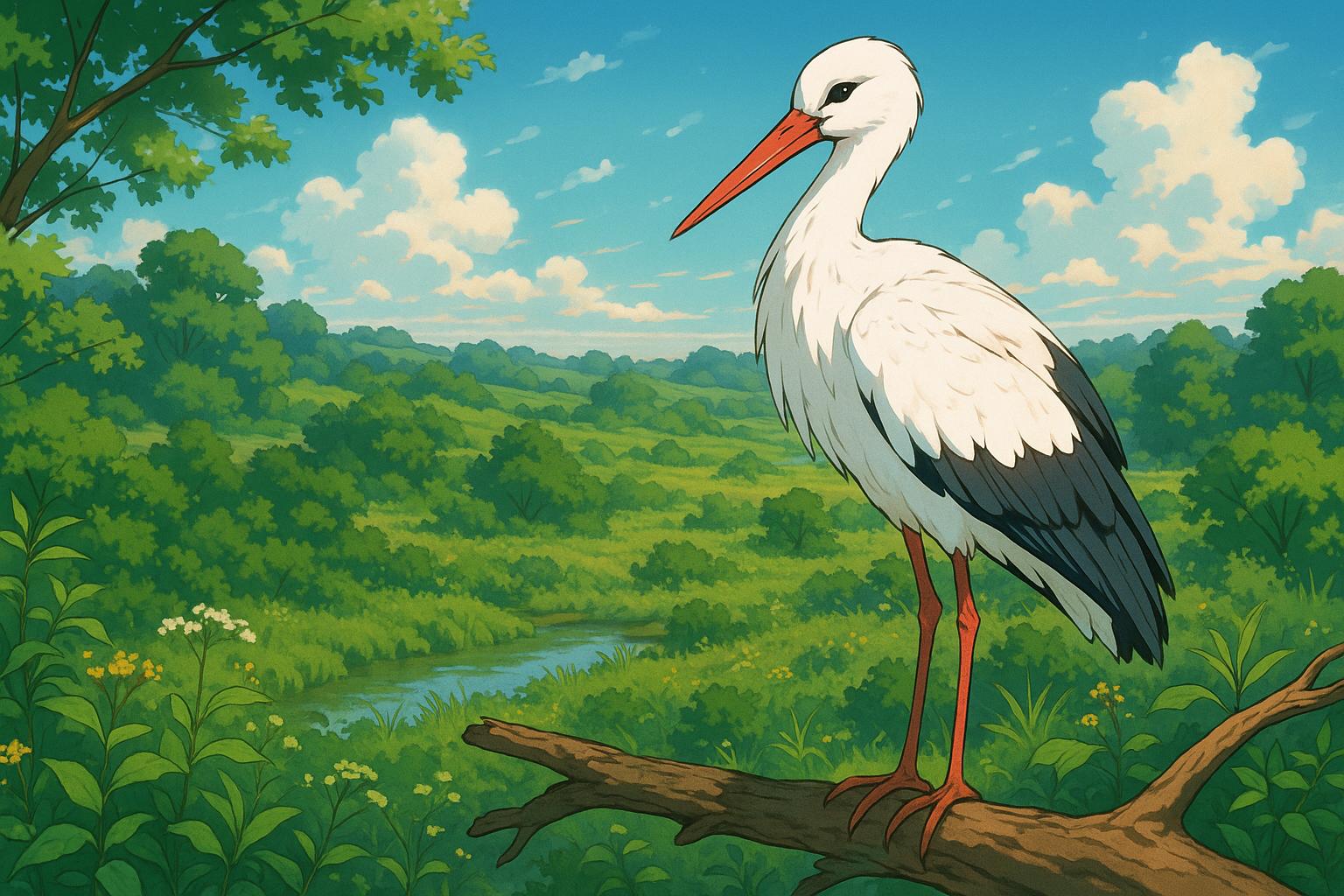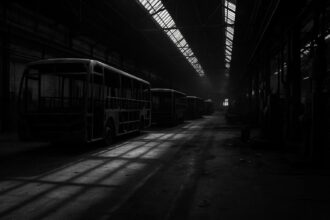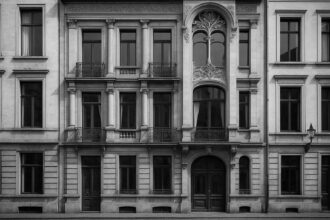At the Knepp Estate in West Sussex, rewilding and a unique reintroduction programme have led to the first successful breeding of white storks in Britain after centuries of absence, signalling a hopeful resurgence for this iconic species.
The Knepp Estate, nestled near Dial Post in West Sussex, has become a noteworthy hotspot for the re-establishment of white storks in Britain. After centuries of absence, these iconic birds have been successfully returning following their migration to Morocco, fostered by an ambitious conservation initiative that seeks to rejuvenate their populations in the region. Historically, white storks were prevalent in the UK, only to vanish due to hunting and habitat destruction over the years. In recent times, while migratory counterparts from the continent still make periodic visits, conservationists stress that without secure nesting colonies, the likelihood of these birds settling to breed diminishes significantly.
Since 2016, the Knepp Estate has served as a focal point for a pioneering reintroduction project aimed at creating sustainable colonies of rehabilitated storks. The initiative features injured birds sourced from Warsaw Zoo in Poland, some of which are housed at the Cotswold Wildlife Park where breeding occurs. Young storks from these efforts are released into the Knepp Estate and the nearby Wadhurst Park, both strategically positioned in Sussex, in hopes of encouraging the birds to return and nest.
The transformation of Knepp into a thriving habitat began in 2000 when extensive rewilding efforts took place. Former agricultural land has been allowed to revert to natural processes, involving the grazing and foraging of animals that cultivate a diverse environment rich in scrub, disturbed ground, and grassland. White stork project officer Laura Vaughan-Hirsch claimed that the storks “love it” in this rewilded landscape, which boasts healthy soils and a bountiful assortment of insect life—crucial for their survival and breeding.
The first white stork chicks were born in the trees at Knepp in 2020, and by 2023, non-flying storks had successfully raised their young in specially designed ground nests, secured against predators. This year, at least six birds born at Knepp have returned after their migration to nest within the colony, with one even choosing to install its nest in the same tree as its parents, humorously pilfering nesting materials from them.
Looking ahead, Vaughan-Hirsch anticipates a burgeoning population, with projections suggesting around 40 fledglings in 2025. She notes that the white stork has evolved into an emblematic figure for nature recovery in the region. Isabella Tree, who co-owns the estate with her husband Charlie Burrell, remarked on the unanticipated positive consequences the reintroduction project has had on local wildlife. “What we are seeing is that even species that don’t have a reputation as being keystone species have an effect on ecosystems,” she stated. The significant ecological impact of these birds challenges long-held assumptions about biodiversity, revealing how interconnected species can shape environmental resilience.
Tree elaborated on the cultural significance of the white stork, highlighting humanity’s enduring relationship with the species across millennia. “We have such a long relationship with these birds, from Egyptians and ancient Greeks to ancient Islam—they’ve always been cherished,” she observed.
As the storks continue to flourish, there is hope that they will extend beyond the Knepp Estate, reclaiming their historical presence in broader landscapes, thus raising the prospect of these majestic birds once again becoming a familiar sight across the British countryside.
 Reference Map:
Reference Map:
Source: Noah Wire Services
- https://www.theargus.co.uk/news/25224864.white-storks-become-familiar-sight-thanks-knepp-estate/?ref=rss – Please view link – unable to able to access data
- https://www.theargus.co.uk/news/25224864.white-storks-become-familiar-sight-thanks-knepp-estate/?ref=rss – The Knepp Estate, near Dial Post, has observed white storks successfully returning after migrating to Morocco. White storks could once be seen in Britain but disappeared centuries ago due to hunting and habitat loss. While migratory storks still visit from the continent, conservationists say they need security of numbers, and the absence of existing colonies mean they do not settle to breed. Since 2016, a reintroduction project in southern England has sought to create new colonies of rehabilitated injured storks, which can act as a “magnet” to draw in other wild birds. The scheme has enabled a wild population of breeding storks to re-establish itself for the first time in centuries and delivered unexpected benefits for other birds and wildlife, conservationists say. The white stork project uses rescued non-flying birds from Warsaw Zoo, Poland, some of which are kept at Cotswold Wildlife Park where they breed, with their young released from the Knepp Estate and Wadhurst Park, both located in Sussex, to encourage them to come back there to nest. The first Knepp chicks were born to birds nesting in the trees in 2020. Other Polish birds, some of which have injuries that mean they can fly short distances but not migrate, live in or around pens on the estates, breeding and establishing the founding colonies that will attract other storks. At Knepp, the storks are in a landscape that has been “rewilded” since 2000, with former agricultural land turned over to natural processes using animals, whose grazing and foraging help create a mosaic of scrub, disturbed ground and grassland. White stork project officer Laura Vaughan-Hirsch said storks “love it” at Knepp, where the rewilding process has created healthy soils and habitat and an abundance and diversity of insect life. The first chicks were born to birds nesting in the trees in 2020, and non-flying storks produced their first young in ground nests in the fox-proof enclosure in 2023. This year Laura said at least six birds born at Knepp have returned after an annual migration to Africa to nest in the colony, including one who has set up home in the same tree as her parents, and has been stealing nesting material from them. The team are expecting around 40 fledglings in 2025. She said: “We all see the white stork as a big charismatic species but what it really is, is an emblem for nature recovery.” Storks’ nests can weigh up to a tonne and attract an array of insects and birds. Isabella Tree, who owns Knepp with her husband Charlie Burrell, said their impact on other species was an “unexpected outcome” of the reintroduction. “What are we are seeing is that even species that don’t have a reputation as being keystone species have an effect on ecosystems. They are doing extraordinary things that we had never really known about.” “The absolute joy and excitement is that they are now flying to Morocco on migration and coming back and nesting and having chicks and interacting with wild birds and bringing wild birds back with them as pairs. We have such a long relationship with these birds, from thousands of years ago, from Egyptians, and ancient Greeks and ancient Islam these birds have been cherished, and they’re somehow in our DNA. We recognise ourselves in them, they kind of walk like us, they look like brigadiers on a parade ground when they’re walking across the fields, and when they’re flying they look like pterodactyls. At Knepp it is hoped the birds will spread out from the estate and start nesting away from the current colony, raising the possibility that, in some areas at least, they will become a familiar sight in the skies, trees and on rooftops again.
Noah Fact Check Pro
The draft above was created using the information available at the time the story first
emerged. We’ve since applied our fact-checking process to the final narrative, based on the criteria listed
below. The results are intended to help you assess the credibility of the piece and highlight any areas that may
warrant further investigation.
Freshness check
Score:
8
Notes:
The narrative presents recent developments in the Knepp Estate’s white stork reintroduction project, with specific dates such as the first chicks in 2020 and projections for 2025. However, similar reports from 2023 suggest that the content may have been recycled or updated, potentially affecting the freshness score. 
Quotes check
Score:
7
Notes:
The quotes attributed to Laura Vaughan-Hirsch and Isabella Tree are consistent with previous reports from 2023. This repetition raises concerns about the originality of the content.
Source reliability
Score:
8
Notes:
The narrative originates from The Argus, a regional newspaper in the UK. While it is a legitimate source, its regional focus may limit the breadth of coverage and verification of the information.
Plausability check
Score:
9
Notes:
The claims about the white stork reintroduction project at Knepp Estate align with known conservation efforts and are plausible. However, the lack of new information or additional sources raises questions about the novelty of the report.
Overall assessment
Verdict (FAIL, OPEN, PASS): FAIL
Confidence (LOW, MEDIUM, HIGH): MEDIUM
Summary:
The narrative appears to be a recycled or updated version of previous reports from 2023, with no new information or sources. The repetition of quotes and the reliance on a single regional source further diminish its credibility. 













